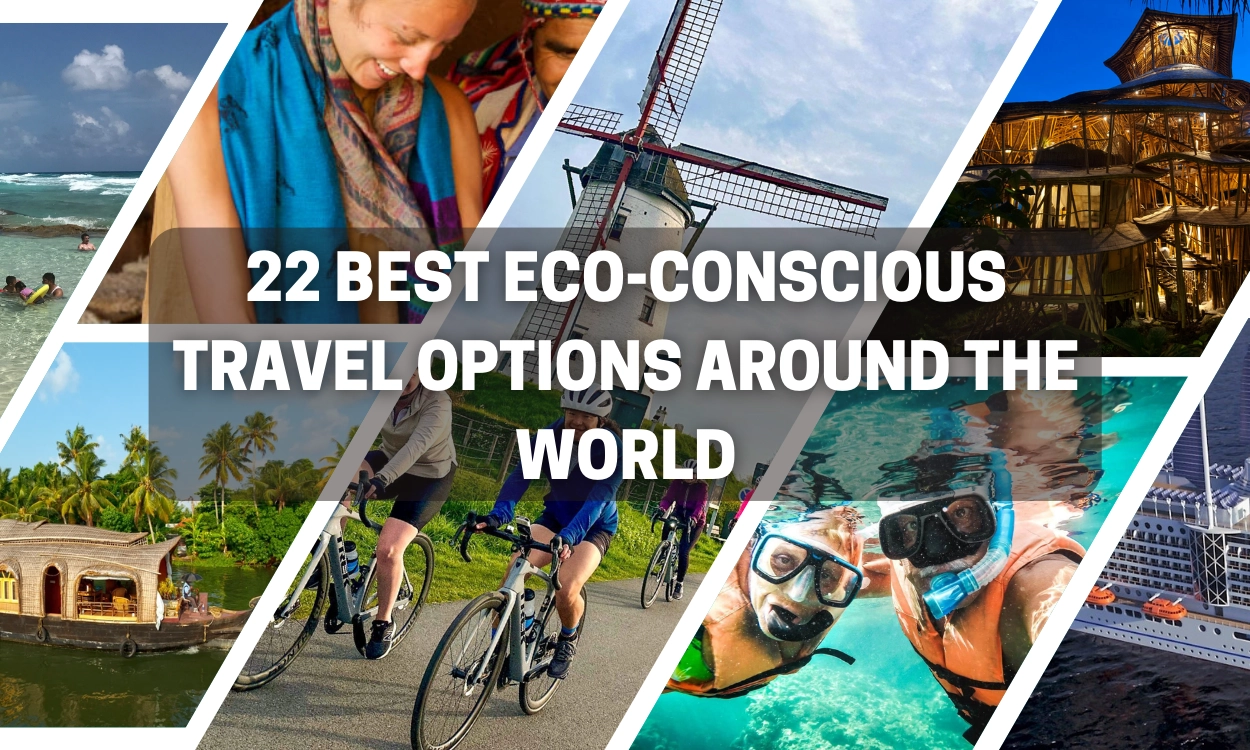In This Article
- Why Choose Eco-Conscious Travel?
- Top 22 Eco-Conscious Travel Options Around the World
- 1. Eco-Lodges in Costa Rica’s Rainforest
- 2. Solar-Powered Resorts in the Maldives
- 3. Green City Stays in Copenhagen, Denmark
- 4. Wildlife Conservation Safaris in Kenya
- 5. Cycling Adventures in the Netherlands
- 6. Train Journeys Across Switzerland
- 7. Eco-Friendly Cruises with Hybrid Ships
- 8. Farm Stays in Tuscany, Italy
- 9. Zero-Waste Hostels in Berlin
- 10. Voluntourism Projects in Nepal
- 11. National Park Camping in Canada
- 12. Hiking Trails in New Zealand
- 13. Bamboo Eco-Villages in Bali
- 14. Wildlife Sanctuaries in Sri Lanka
- 15. Eco-Island Retreats in Greece
- 16. Desert Eco-Camps in Jordan (Wadi Rum)
- 17. Treehouse Stays in Thailand
- 18. Glacier-Friendly Tours in Iceland
- 19. Community-Based Tourism in Peru
- 20. Slow Travel by Riverboats in Vietnam
- 21. Eco-Friendly Houseboats in Kerala, India
- 22. Reef-Safe Adventures in Cozumel, Mexico
- Tips for Planning an Eco-Friendly Trip
- Final Thoughts on Eco-Conscious Travel
- FAQs About Eco-Conscious Travel
Traveling is fun, no doubt, but let’s be real—hopping on planes, staying in huge resorts, and leaving behind piles of plastic isn’t exactly planet-friendly. That’s where eco-conscious travel comes in. More and more people are choosing sustainable trips that don’t just give them amazing memories, but also show a little love to the environment.
In this guide, I’ve rounded up the 22 Best Eco-Conscious Travel Options that are not only exciting but also kinder to the earth. Think less waste, more nature. Less rushing, more slow travel. From sleeping in bamboo huts in Bali to cycling through the Netherlands, these experiences prove you don’t have to sacrifice comfort or fun to make eco-friendly travel choices.
And honestly, it’s not all about being perfect. Nobody expects you to give up airplanes forever. But switching to greener options when you can—like staying in eco-lodges, exploring national parks, or even trying a zero-waste hostel—does make a difference.
So if you’ve been looking for ideas on how to explore the world without feeling guilty about your carbon footprint, this list is for you. Let’s dive into some of the coolest green travel options out there.
👉 Direct Jump To The 22 Best Eco-Conscious Travel Options List
Key Takeaways
There is a ton of helpful information on this page, but these are the main points to remember.
- Eco-conscious travel helps reduce your carbon footprint and supports sustainable tourism worldwide.
- Choosing eco-lodges, green hotels, and solar-powered resorts allows travelers to enjoy comfort while protecting the planet.
- Sustainable transport options like trains, cycling, and riverboats are cleaner alternatives to flights and cars.
- Supporting local communities and small businesses creates a positive social and economic impact.
- Simple actions like reducing plastic use, packing eco-friendly gear, and respecting wildlife make a big difference.
- Eco-travel is not about sacrifice—it’s about experiencing destinations more authentically and responsibly.
- By picking even one eco-conscious option, every traveler contributes to a greener, more sustainable future.
Why Choose Eco-Conscious Travel?

So, why even bother with eco-conscious travel? Well, it’s not just about hugging trees or giving up all comfort. It’s more like finding smarter ways to explore the world without wrecking it in the process. Every trip leaves a footprint, but with a little effort, you can make yours a lighter one.
Here’s the thing: travel is amazing, but it also comes with side effects—carbon emissions, plastic waste, overcrowded tourist spots. Choosing sustainable travel options helps balance that out. And honestly, it feels pretty good knowing your vacation is doing some good too.
A few quick reasons people are switching to eco-friendly travel:
- You support local communities instead of just big chains.
- Nature actually stays beautiful for the next traveler (and the next generation).
- You’ll discover unique experiences—like staying in bamboo huts or cycling through a city instead of sitting in traffic.
- And let’s be real: eating farm-to-table food in some cozy eco-lodge? Way better than fast food at the airport.
At the end of the day, eco-conscious tourism isn’t about being perfect. It’s just about making choices—small ones—that add up. And if you can help the planet while still having the time of your life, why not?
Understanding Sustainable Tourism
Okay, so what’s all this talk about sustainable tourism? Basically, it’s about traveling in a way that doesn’t wreck the planet or drain local communities dry. Instead of just focusing on “cheap deals” or “all-inclusive buffets,” eco-conscious travel is more about the bigger picture. It’s asking: how can we see the world, enjoy the experience, but also leave a positive footprint instead of a mess?
Think of it like this — sustainable tourism isn’t just hugging trees (though nothing wrong with that). It’s staying in eco-lodges that run on solar power, choosing train rides over short flights when you can, eating local food instead of imported fast food, and supporting businesses that actually give back to their communities.
For me, it’s kind of refreshing. Traveling with a little awareness feels way better than just rushing through places with a camera. Plus, you end up finding cooler, more authentic stuff along the way.
How Travel Impacts the Environment
Now, let’s be real: travel is amazing, but it’s also a huge polluter. Planes burn through fuel like crazy. Hotels in big cities often waste tons of water and energy. Even cruise ships (the floating buffets we all secretly love) are some of the worst culprits for pollution.
Here’s a quick rundown of the not-so-pretty side of traveling:
- Carbon emissions: Flights are one of the biggest contributors. A single long-haul trip can pump out more CO₂ than you’d use at home in months.
- Overtourism: Think Venice or Machu Picchu — too many people at once, and the culture + environment starts cracking under the pressure.
- Waste: Plastic bottles, food packaging, “disposable” souvenirs… all of that piles up fast.
- Wildlife stress: Those Instagram elephant rides or “exotic animal selfies” are often tied to pretty sketchy practices.
It doesn’t mean we should all stop traveling (let’s be honest, that’s not happening), but it does mean being more mindful. Choosing eco-conscious travel options — like staying in smaller family-run guesthouses, using reusable bottles, or hopping on a bike instead of Uber — makes a difference.
25 Best Outdoor Vacation Ideas with a Toddler (2025 Guide)
Benefits of Eco-Friendly Travel for You and the Planet
Here’s the cool part: eco-friendly travel isn’t just about saving the planet, it’s also way more rewarding for you.
- Better experiences – Instead of rushing with tourist crowds, you slow down. You hike, cycle, take trains, and actually notice the little things.
- Healthier for you – Walking, biking, eating local produce… it’s basically like sneaking in a wellness retreat without even trying.
- Deeper connections – When you stay with locals or support community projects, you get to know people, not just places. It feels less like a checklist and more like an actual memory.
- Saving money (sometimes) – Believe it or not, eco-conscious travel doesn’t always mean “expensive luxury.” Street food, local buses, and small guesthouses are often cheaper and greener.
And for the planet? Well, it’s obvious: fewer carbon emissions, less plastic waste, more support for local economies, and safer environments for animals. Small changes add up.
At the end of the day, eco-conscious travel isn’t about being perfect. You don’t need to live in a tent and eat only organic nuts. It’s about making better choices where you can. Skip one flight, take a train. Carry a reusable water bottle. Pick the eco-lodge instead of the mega resort. Each tiny step helps — and honestly, it makes the whole trip feel a lot more meaningful.
Top 22 Eco-Conscious Travel Options Around the World
Looking for eco-conscious travel options that don’t trash the planet? From green city breaks to wild camping spots, these sustainable travel ideas mix fun with responsibility. It’s not about being perfect, just choosing better. Here are 22 eco-friendly ways to see the world without the guilt.
1. Eco-Lodges in Costa Rica’s Rainforest

If there’s one place that really nails eco-conscious travel, it’s Costa Rica. This country is like the poster child for sustainable travel. You’ll find dozens of eco-lodges hidden deep inside the rainforest, some of them built entirely with local materials and powered by solar panels. The cool part? You’re literally surrounded by wildlife — monkeys jumping from tree to tree, colorful birds waking you up in the morning, and waterfalls just a short hike away.
Most eco-lodges here focus on low-impact tourism. They recycle rainwater, compost food waste, and many even run on renewable energy. It’s not just about the stay though — they’ll usually offer tours where you learn about conservation or even plant a tree yourself. So, you’re not just traveling, you’re leaving something positive behind. That’s what makes it one of the best eco-conscious travel options out there.
2. Solar-Powered Resorts in the Maldives
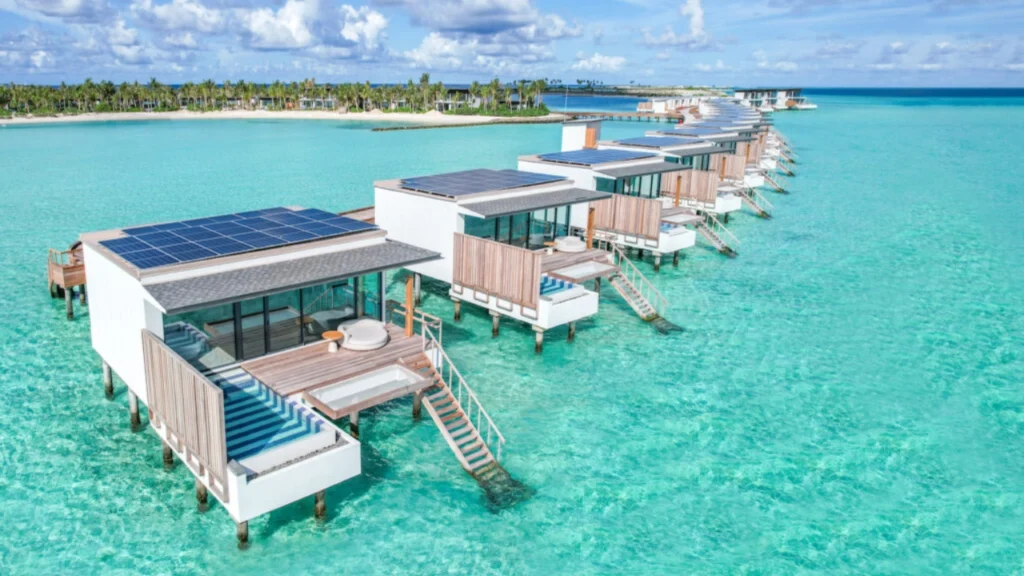
When people think of the Maldives, they usually picture luxury bungalows floating above crystal-clear water. But in recent years, many resorts have started switching gears to become more eco-friendly. There are now solar-powered resorts where almost all the electricity comes from the sun. Imagine chilling on a hammock, sipping a drink, and knowing that your AC is running thanks to solar energy instead of burning fuel.
A lot of these resorts also focus on reef protection and sustainable fishing. Some even ban single-use plastics completely. And let’s be honest, it feels a lot better diving into those turquoise waters when you know the place is doing its part to keep the ocean clean. It’s basically luxury travel with a green conscience — not a bad combo at all.
3. Green City Stays in Copenhagen, Denmark

Copenhagen is often called one of the greenest cities in the world, and for good reason. The city is super bike-friendly, public transport runs on renewable energy, and you’ll find hotels that are designed with eco-friendly architecture. We’re talking buildings that recycle heat, minimize water waste, and even have rooftop gardens for fresh food.
The vibe here is very “sustainable living made easy.” You can rent a bike and just cruise through the city, stop at organic cafes, and shop from local designers that push zero-waste fashion. For urban travelers who don’t wanna give up comfort, Copenhagen is definitely a top pick on the list of eco-conscious travel options.
Also Check: 50 Best Summer Vacation Ideas Around the World
4. Wildlife Conservation Safaris in Kenya

Safaris aren’t just about snapping pictures of lions and elephants anymore. In Kenya, a lot of tours are now built around wildlife conservation. You’ll find eco-lodges inside game reserves that run on solar power, employ local communities, and put profits back into protecting endangered species.
Some safaris even let you join researchers for a day — tracking animals, learning how poaching is fought, and understanding the balance of ecosystems. It’s a lot more meaningful than a regular “drive around and take photos” kind of trip. Plus, supporting these safaris means your money goes into keeping wildlife safe. That’s sustainable travel at its core.
5. Cycling Adventures in the Netherlands

The Netherlands is pretty much cycling heaven. It’s flat, the bike lanes are everywhere, and the culture around biking is so strong that cars often feel like the outsiders. For eco-friendly travelers, hopping on a bike here is not just transportation, it’s the whole experience.
You can take guided cycling tours through tulip fields, windmills, and small villages. Or just rent a bike in Amsterdam and ride along the canals. It’s fun, it’s active, and it’s probably the greenest way to see a country. No emissions, no traffic stress, just fresh air and a lot of leg work. Out of all the eco-conscious travel options, this one feels the most simple yet rewarding.
👉 30 Best Eco-Friendly Travel Destination Ideas Around The World
6. Train Journeys Across Switzerland

When people talk about eco-conscious travel options, Switzerland’s trains always make the list. Honestly, it’s one of the cleanest, most scenic, and eco-friendly ways to get around the country. Instead of renting a car and burning through fuel, hopping on the train lets you just sit back, relax, and stare out the window at snow-capped peaks and bright green valleys.
The Swiss rail network is like clockwork. Trains are electric, they’re punctual to the minute, and they connect even the tiniest mountain villages. And here’s the fun part: some of the rides, like the Glacier Express, feel less like transport and more like a moving postcard. You’ll go through tunnels, cross crazy bridges, and honestly, you’ll wonder why anyone would even want to fly short distances when you can see the country like this.
So yeah, if you want an eco-friendly travel adventure that doesn’t feel like a sacrifice, trains in Switzerland are a no-brainer.
7. Eco-Friendly Cruises with Hybrid Ships

Cruises don’t exactly scream “sustainable tourism,” right? Huge ships, tons of fuel, and piles of waste. But things are starting to change. A few companies now run eco-friendly cruises with hybrid or even electric-powered ships. These aren’t the giant floating cities with buffets and casinos—think smaller, smarter, greener.
For example, some hybrid ships in Norway run partly on battery power, gliding through fjords without that awful engine noise. The view is the same jaw-dropping mountains and icy blue water, but the footprint is way smaller. Onboard, they cut down on single-use plastics, recycle pretty much everything, and even source local food.
If you love the idea of being out at sea but don’t want the guilt, this is one of those eco-conscious travel options worth looking at.
8. Farm Stays in Tuscany, Italy

Now, this is where green travel gets cozy. Imagine waking up in the Tuscan countryside, hearing roosters instead of car horns, and eating food that was literally picked that morning. Farm stays in Italy are all about slow living and supporting local families.
Instead of staying in some chain hotel, you get a room on a working farm. Grapevines everywhere, olive trees, fresh bread in the morning—it’s straight out of a movie. And here’s the eco-friendly twist: most of these farms run on sustainable practices. They grow organic produce, reduce waste, and sometimes even generate their own energy with solar panels.
Plus, you’re supporting the local economy directly. No middleman. No huge corporations. Just real people sharing their land, their food, and their way of life. Honestly, it doesn’t get more wholesome than this.
9. Zero-Waste Hostels in Berlin

Hostels are usually known for cheap bunk beds and backpacker vibes. But in Berlin, a handful of zero-waste hostels are showing how budget travel can also be sustainable. Everything is designed to cut down waste: furniture made from recycled wood, water-saving showers, and kitchens stocked with bulk ingredients instead of packaged stuff.
And the atmosphere? Super chill. You meet other travelers who care about the planet, swap tips on eco-conscious travel options, and maybe even cook together in the common kitchen. Some hostels even run little workshops on upcycling or sustainable living.
It’s proof that you don’t need a five-star eco-lodge to do green travel right. Sometimes, a €20 bed in a smart hostel is all you need.
10. Voluntourism Projects in Nepal

Here’s something different: voluntourism. It’s basically travel mixed with volunteering, and Nepal has become a hotspot for it. Instead of just visiting and snapping pictures, you actually help out with projects—like teaching English in small villages, rebuilding schools after earthquakes, or working on wildlife conservation.
Now, not all voluntourism is perfect (some programs can be sketchy), but the genuine ones make a big difference. You live with locals, share meals, and really see daily life up close. It’s not a “holiday” in the usual sense—it’s tougher, sometimes emotional—but it’s one of the most rewarding eco-conscious travel options out there.
And Nepal itself? Beautiful. The Himalayas are beyond words. Pair that scenery with doing good for the community, and it’s a travel experience that sticks with you forever.
11. National Park Camping in Canada
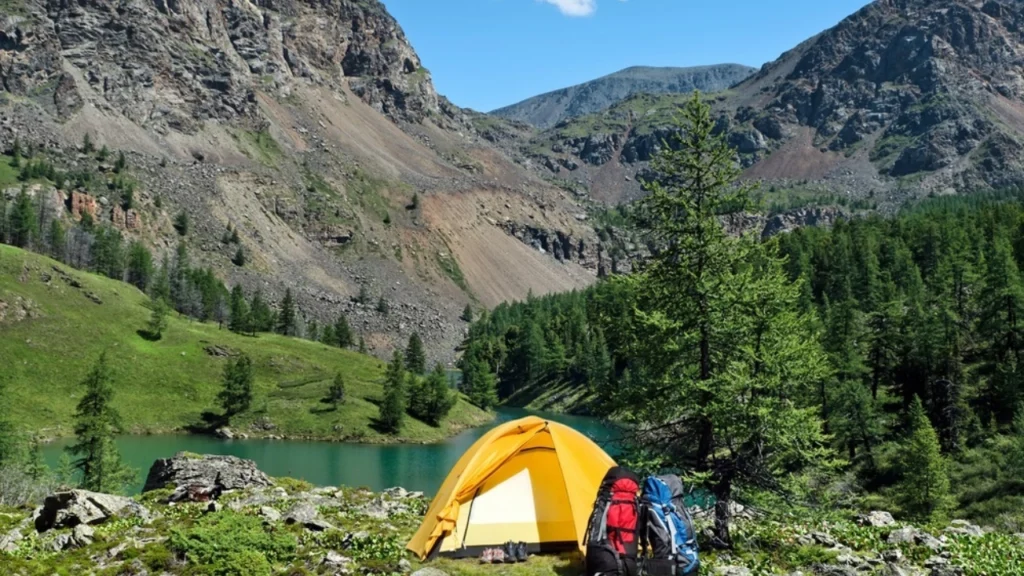
If you’re into nature that feels endless, Canada’s national parks are like a dream. Think Banff, Jasper, Yoho — wild mountains, glassy lakes, and more trees than you can count. Camping here is not just about pitching a tent, it’s about waking up with elk wandering nearby or hearing wolves at night (don’t worry, usually far away).
What makes it eco-conscious? Many parks in Canada are serious about protecting the environment. Campgrounds often have recycling programs, limited car access, and rules to keep wildlife safe. And honestly, there’s no better way to travel green than swapping hotels for a simple tent under the stars.
12. Hiking Trails in New Zealand
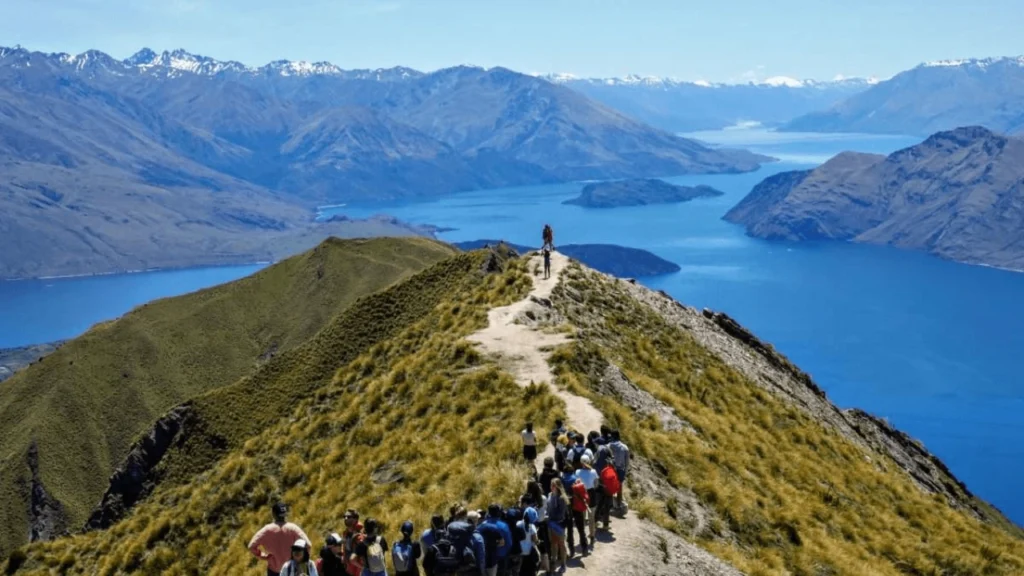
New Zealand is basically made for hikers. Locals call it “tramping,” and trust me, the trails here are next-level. The famous Milford Track, Routeburn, Tongariro Alpine Crossing — all give you insane views, from volcanoes to fjords.
Eco-wise, New Zealand is pushing hard on conservation. They limit daily hikers on certain trails to protect the land, and many huts along the way are solar-powered. Plus, walking is as eco-friendly as it gets — zero emissions, just you and your boots. If you want to feel small in the best way possible, these trails do the trick.
13. Bamboo Eco-Villages in Bali
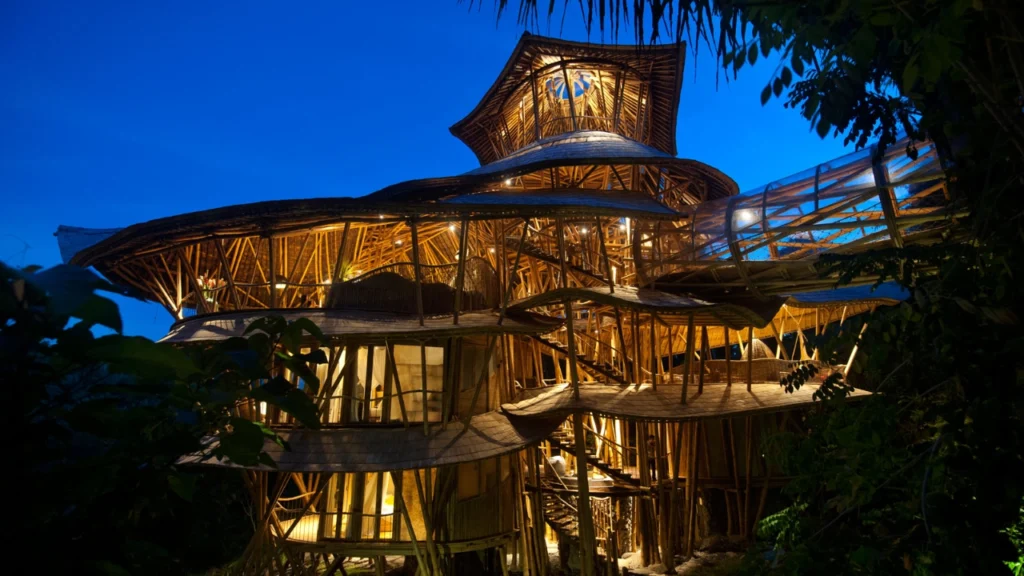
Bali isn’t just yoga retreats and beach clubs. If you head away from the crowded spots, you’ll find bamboo eco-villages hidden in the rice fields. These places are built almost entirely from bamboo — houses, furniture, even staircases.
Staying here feels different. You wake up with jungle sounds, eat organic food grown on-site, and use natural soaps because they don’t want chemicals running into rivers. A few of these villages even run workshops where you can learn bamboo building techniques. It’s travel that’s relaxing, but also leaves you with a sense you’ve learned something.
14. Wildlife Sanctuaries in Sri Lanka

Sri Lanka is full of wildlife — elephants, leopards, birds you’ve probably never seen before. Instead of doing the old-school tourist safari thing, eco-conscious travelers are turning to sanctuaries and responsible tours.
Some sanctuaries rescue elephants from working camps or poor conditions and give them a safer life. Visitors can learn, help feed, or even plant trees that improve the animals’ habitat. The cool part? You get close to the wildlife without harming it. And since Sri Lanka’s eco-lodges often use solar energy and local staff, your trip supports the community too.
15. Eco-Island Retreats in Greece
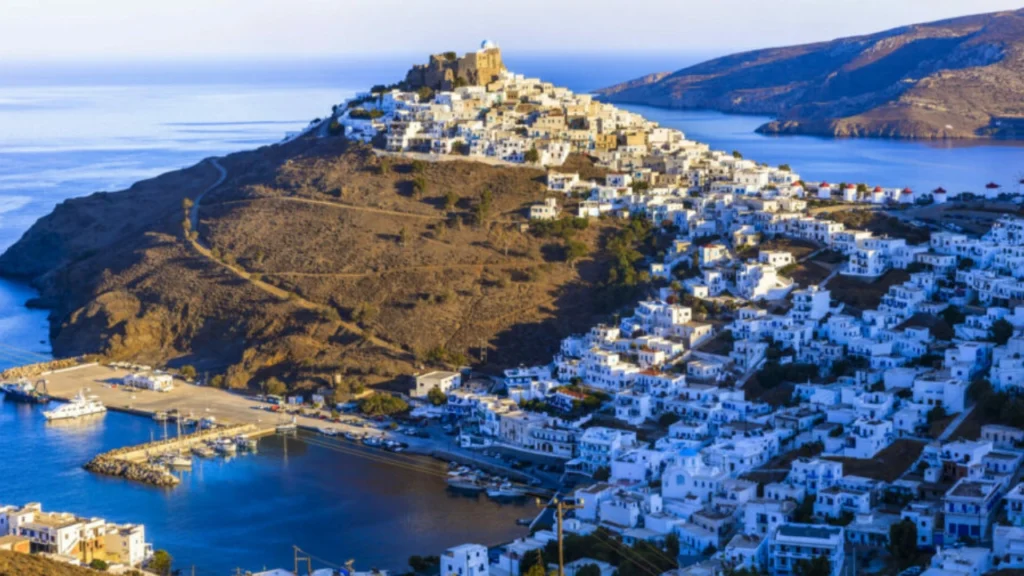
When people say Greece, you probably think Santorini sunsets or Mykonos parties. But there’s another side — small eco-islands where tourism is low-key and sustainable. Places like Tilos or Astypalaia are going green with renewable energy, plastic bans, and slow-paced tourism.
Staying in eco-retreats here means solar panels, organic meals, and beaches without crowds. Instead of giant hotels, you’ll find family-owned spots that care more about nature than profits. It’s still that postcard Greece — white houses, blue seas — just without the over-tourism guilt.
16. Desert Eco-Camps in Jordan (Wadi Rum)
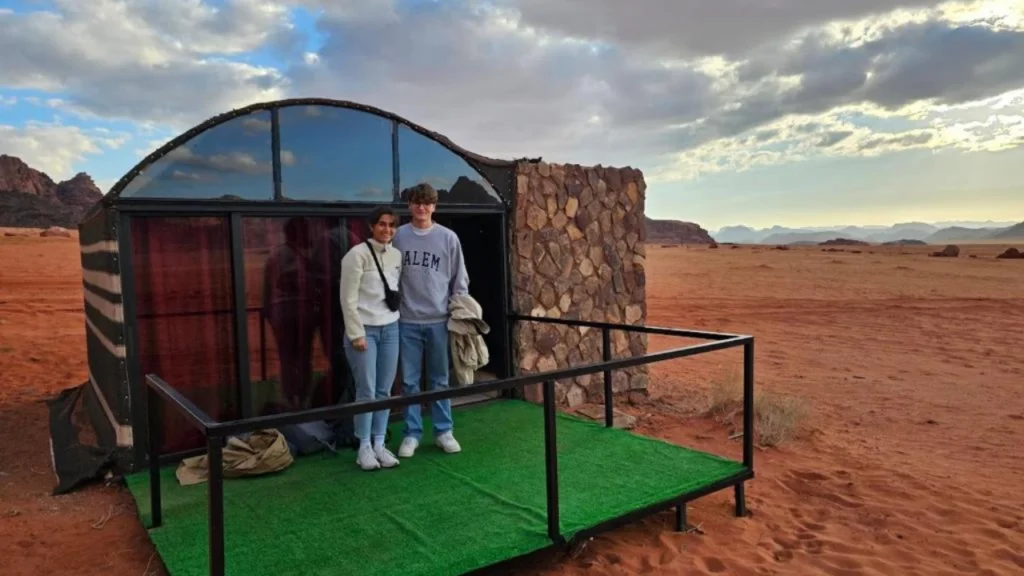
Now this one’s wild. Wadi Rum looks like Mars — huge red rocks, endless desert, and starry skies that actually make you feel tiny. Instead of staying in fancy resorts, travelers go for desert eco-camps run by local Bedouin families.
These camps usually use solar power, cook with traditional methods, and limit plastic waste. Nights are spent around a fire, mornings with sweet Bedouin tea. It’s simple living, but super authentic. And the best part? Your stay directly supports the community, not some big chain hotel.
Camping in Wadi Rum is probably one of the most eco-conscious travel options out there — minimal impact, maximum experience.
17. Treehouse Stays in Thailand

If you’re dreaming about something straight out of a childhood fantasy, a treehouse stay in Thailand should be high on your list of eco-conscious travel options. Imagine waking up to the sound of birds, surrounded by green jungle, and sunlight sneaking through the leaves. Pretty magical, right?
The cool part is that many of these treehouses are built with local materials like bamboo and wood, blending perfectly with the environment. They often run on solar energy and use rainwater collection systems. So it’s not just about the vibe — it’s about reducing your footprint while enjoying nature.
Some popular spots are around Chiang Mai and Pai, where you’ll also find yoga retreats, organic food, and friendly locals. It’s the kind of trip where you swap Wi-Fi for fireflies at night. Not bad at all.
18. Glacier-Friendly Tours in Iceland

Now let’s slide (literally) over to Iceland. This country is like another planet — volcanoes, waterfalls, black sand beaches, and of course, glaciers. But here’s the thing: glaciers are melting fast, and that makes eco-conscious travel here extra important.
“Glacier-friendly tours” basically mean travel companies that operate with sustainability in mind. For example:
- Smaller group sizes so they don’t overcrowd fragile sites
- Guides who explain the effects of climate change (you learn while you explore)
- Using electric or low-emission vehicles for transportation
- Leaving no trash behind — the golden rule in Iceland
Instead of hopping on a loud snowmobile that burns fuel, you might go on a guided glacier walk with crampons. It’s safer, quieter, and leaves less impact. And honestly, walking on ice that’s thousands of years old feels way more powerful than revving an engine.
19. Community-Based Tourism in Peru
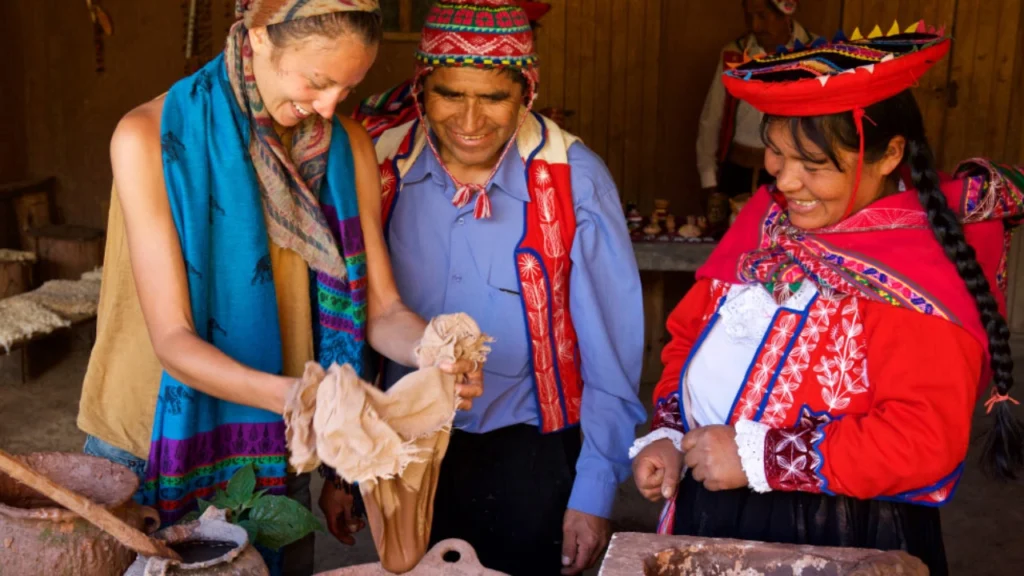
Eco-friendly travel isn’t only about nature, it’s also about people. Community-based tourism in Peru gives you the chance to stay with local families, eat their homemade meals, and actually learn about their traditions — not just snap a few photos and leave.
For example, around Lake Titicaca, you’ll find homestays where families welcome travelers into their homes. You get to experience their daily routines, try weaving, taste traditional Andean dishes, and even join in community projects.
It’s a win-win: travelers get authentic experiences (and amazing food), while locals earn income that supports their families without relying only on mass tourism. Plus, money goes directly into the community instead of some giant tour company. That’s real sustainable travel.
20. Slow Travel by Riverboats in Vietnam

Let’s end this little journey in Southeast Asia. Vietnam’s rivers — especially the Mekong Delta — are like highways of life. Instead of rushing through the country by plane or bus, slow travel by riverboat is one of the most relaxing eco-conscious travel options you can try.
Riverboats move at a chill pace, so you actually have time to watch the scenery — floating markets, fishermen, rice paddies, kids waving from the banks. The slower speed also means fewer emissions compared to constant short domestic flights.
Some riverboats are designed with eco-friendly tech, using cleaner fuels or solar panels. And since you’re not hopping from city to city, you naturally consume less. It’s travel that feels… well, slower in the best way. You disconnect from the rush and reconnect with the moment.
21. Eco-Friendly Houseboats in Kerala, India
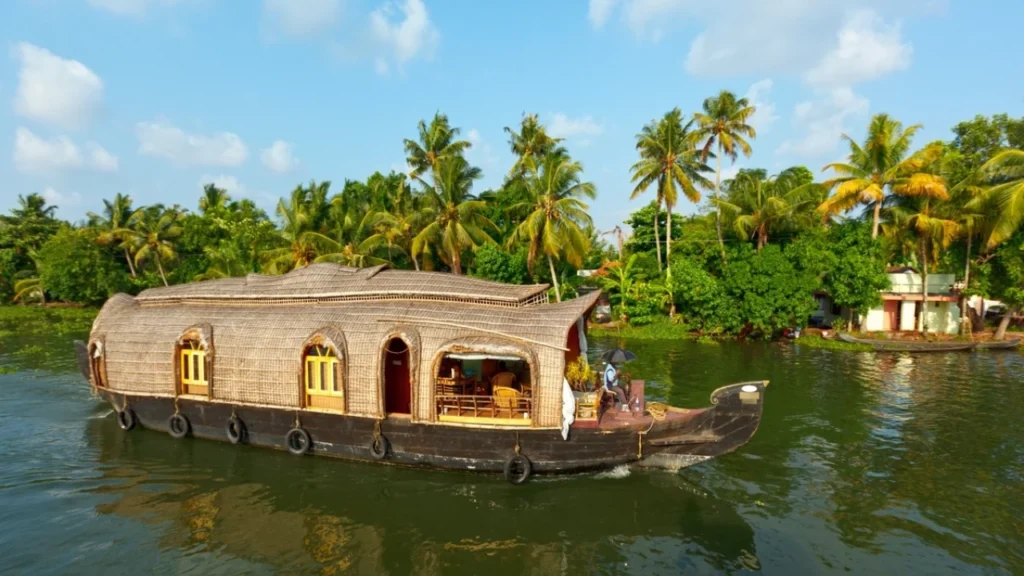
Kerala’s backwaters are already famous, but the real gem here is staying on an eco-friendly houseboat. Instead of the old diesel-guzzling versions, more operators now use solar panels, bio-toilets, and cleaner fuels. The vibe is unreal: you’re gliding slowly through palm-lined canals, spotting birds, fishermen, and little villages on the banks.
It’s slow travel at its finest. Meals are usually cooked right on the boat, often with fresh local produce. You eat while the water gently rocks you, and at night you fall asleep to cricket sounds instead of car horns.
The cool thing? These houseboats provide jobs for locals and push tourism money directly into the community. So you’re not just enjoying nature — you’re supporting it. Definitely one of India’s best eco-conscious travel options if you love calm water, sunsets, and the kind of quiet that stays with you.
22. Reef-Safe Adventures in Cozumel, Mexico

Cozumel is a diver’s paradise — crystal-clear water, coral reefs, and colorful fish everywhere. But with all that beauty comes responsibility. The island has been pushing for reef-safe, eco-conscious travel for years now.
Instead of hopping on any random snorkel tour, you can join operators who actually protect the reefs. That means smaller groups, eco-friendly boats, and strict “no touching coral” rules. They’ll even encourage you to use reef-safe sunscreen (the regular stuff seriously harms marine life).
Beyond diving, Cozumel also has eco-parks and mangrove tours where you learn about the local ecosystem. And trust me, kayaking through mangroves at sunset hits different.
The best part? By choosing sustainable operators, you’re helping keep one of the world’s most stunning marine spots alive for the future. It’s paradise with a purpose — and one of the best eco-conscious travel options in the Caribbean.
Also Check: How Do I Set Up a DSLR to Take Photos of the Stars? (Beginner’s Guide)
Tips for Planning an Eco-Friendly Trip
So, you wanna travel but also keep the planet in mind? That’s honestly the way to go these days. Eco-friendly travel isn’t about living like a monk or giving up all the fun—it’s just about making smarter choices that don’t trash the environment while you enjoy your trip. And it’s not even that complicated once you get into the habit.
Here are a few simple ways to plan a greener trip:
1. Transport Matters (Big Time)
Flights are the biggest culprits when it comes to carbon emissions. If you can swap a short-haul flight for a train ride or even a bus, do it. Trains in Europe, for example, are super comfy and you actually see stuff along the way. If flying is unavoidable, try booking direct flights since takeoffs and landings burn the most fuel. Oh, and some airlines let you offset your carbon footprint—it’s not perfect, but it’s better than nothing.
2. Stay Green Where You Sleep
Hotels aren’t all the same. Some go the extra mile with solar panels, water-saving showers, or zero-waste kitchens. Eco-lodges, hostels with recycling programs, or even local farm stays are awesome options. You’ll feel way better supporting a place that cares about sustainability than some flashy resort that wastes electricity like it’s going out of style.
3. Pack Like a Pro (an Eco-Pro)
Ditch single-use plastic. Refillable bottles, bamboo toothbrushes, and cloth shopping bags are tiny changes that make a huge difference. Also, don’t overpack. The more weight on planes, the more fuel burned. Plus, let’s be honest—half the stuff you pack, you don’t even end up wearing.
4. Eat Local & Seasonal
One of the easiest eco-conscious travel tips is to eat what’s grown locally. Imported food has a massive carbon footprint. Plus, local dishes are usually tastier and give you that real “I’m in another culture” vibe. Bonus points if you support small family-owned restaurants instead of global fast-food chains.
5. Respect Nature & Wildlife
This should go without saying, but yeah… don’t litter on hiking trails, don’t touch coral reefs, and don’t take selfies hugging wild animals. Respecting the environment is like the number one rule of eco-friendly tourism.
Final Thoughts on Eco-Conscious Travel
Traveling green isn’t just a trend. It’s kinda becoming the new normal, and honestly, that’s a good thing. People are realizing that flying around the globe, staying in giant air-conditioned hotels, and eating imported strawberries in the middle of nowhere might not be the most sustainable way to see the world.
An eco-friendly trip makes travel feel… I dunno, more real? When you slow down, take the train, stay in smaller places, or hang out with locals, you get a version of the country you’d never find at a five-star all-inclusive. And let’s be real: stories about the random bakery you found on a backstreet are always better than talking about the buffet at your resort.
Why Small Changes Make a Big Impact
You might think, “Okay, me using one less plastic straw doesn’t change the world.” But when millions of travelers do the same, the ripple effect is insane. Every eco-friendly choice—whether that’s skipping a plastic bag, walking instead of driving, or choosing a sustainable hotel—adds up. You’re basically voting with your wallet and your actions.
And here’s the thing: travelers influence businesses. When people demand greener options, companies listen. That’s why more hotels are going plastic-free, more airlines are offering offset programs, and more tour companies are going “eco-certified.” It’s happening because people care.
The Future of Green Travel
So where’s all this heading? Honestly, the future of travel looks way more eco-conscious than it did even ten years ago. Technology is stepping in big time. We’re talking electric planes already being tested, hybrid cruise ships cutting down fuel, and cities making biking and public transport way more accessible.
Travelers are also becoming more mindful. “Slow travel” is starting to trend, which is basically staying longer in one place instead of hopping around like crazy. It saves emissions and lets you really soak in the local vibe. Another cool thing is community-based tourism. Instead of your money going to big corporations, it goes straight to local families, villages, or conservation projects. Win-win.
Of course, the future isn’t perfect. Mass tourism still puts pressure on places like Venice, Bali, or Iceland. But awareness is growing, and destinations themselves are setting rules—like limiting visitors or banning single-use plastics. That’s a sign the travel industry is waking up.
If you ask me, eco-conscious travel isn’t just a “trend” anymore. It’s gonna be the normal way of traveling in the future. And the cool part? You don’t have to sacrifice fun or comfort. In fact, eco-travel usually feels more authentic, more adventurous, and honestly… way more rewarding.
So yeah, next time you plan a trip, think about how your choices add up. The planet will thank you, and your memories will feel a whole lot better knowing you left a lighter footprint.
FAQs About Eco-Conscious Travel
What does eco-conscious travel mean?
Eco-conscious travel (also called sustainable travel) means exploring new places while minimizing negative impacts on the environment and supporting local communities.
Is eco-friendly travel more expensive?
Not always. Some eco-options like train travel, camping, or staying in community-based lodges can actually be cheaper than luxury resorts or flights.
How can I make my trips more eco-conscious?
Choose eco-friendly transportation (train, bike, bus), support local businesses, reduce plastic use, pack reusable items, and respect wildlife and nature.
Are eco-conscious travel options available worldwide?
Yes! From eco-lodges in Costa Rica to train journeys in Europe and community tourism in Asia, sustainable travel options are available everywhere.
Why should I choose eco-conscious travel?
Because it helps reduce your carbon footprint, protects nature, supports local cultures, and ensures that destinations remain beautiful for future generations.
